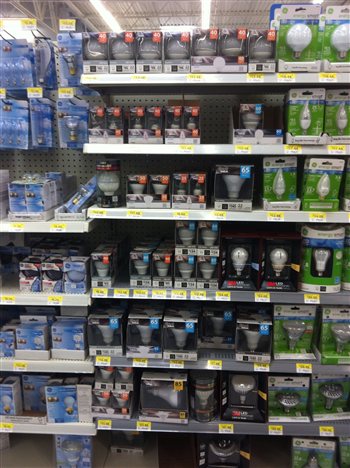Prasad Dhond, Marketing Manager of Lighting Power Products at Texas Instruments (TI) gives a comprehensive overview of the effects of the incandescent bulb phase out in 2014. Below is his recent blog entry:
You heard, right? The incandescent light bulb that we have known for over 100 years will not be produced any more in the United States. Actually, the 100W incandescent has been phased out since 2012 and the 75W has been phased out since 2013. But maybe you hadn't noticed since the most common variations - the 40W and 60W bulbs - will only be phased out starting Jan. 1, 2014.
Table 1: General-purpose incandescent bulbs phase-out schedule in U.S.
Date Jan. 1, 2012 Jan. 1, 2013 Jan. 1, 2014 Bulb wattage 100W 75W 60W - 40W
* California will enact the phase-out one year earlier than these dates.
So if you are in your local hardware or retail store in February or March 2014 and decide to pick up a box of bulbs, you will likely not find the incandescent bulb on store shelves anymore. Some of the likely alternatives are:
LED light bulbs (my favorite - see the various drivers we make here) Compact fluorescent lamps (CFL) Halogen bulbs I was at Walmart last week and saw this huge line-up of new LED bulbs sold under their Great Value brand:

LED bulbs sold at Walmart. (LEDinside/ TI)
According to a U.S. Department of Energy report, there are 3.3 billion A-Type lamps installed in the U.S. alone, offering significant potential for energy savings. The Energy Independence and Security Act (EISA 2007) was a major piece of energy legislation that included a section on Energy Efficient Light Bulbs. This section (321) mandates minimum performance requirements for light bulb wattage, lumen output and life. Although the regulation is not a formal ban, it essentially phases out the common incandescent bulbs in favor of more efficient alternatives. The new standards exclude specialty bulbs (used in appliances, etc), reflector bulbs and other less common bulbs.
Let's look at the various replacement options and how they compare with a 40W standard incandescent:
Type of bulb Wattage Lumens Dimmable Lifetime Price (US$) Annual Energy Cost* (US$) LED 6W 450 Yes 25,000 hours $9.97 $0.72 CFL 9W 500 No 12,000 hours $1.99 $1.20 Halogen 29W 430 Yes 1,000 hours $1.67 $3.49 Standard Incandescent 40W 500 Yes 1,000 hours $0.37 $4.82
* Assumes 3 hours/day and $0.11/kWh electricity cost
LED bulbs offer advantages such as instant on, dimming and no mercury. Due to their high efficacy (lumens/Watt performance) and long lifetime, they offer the lowest total cost of ownership. Their only drawback is the initial sticker shock. Although prices have come down to <$10 per LED light bulb, I wonder if consumers won't just grab the lowest cost bulb on the shelf and be on their way. There is no doubt that LED lighting provides the best savings over the long term, especially when the hours of bulb operation are high. There is ample proof of this in the increasing use of LED lighting in commercial settings where the positive impact on the bottom line has been carefully calculated.





